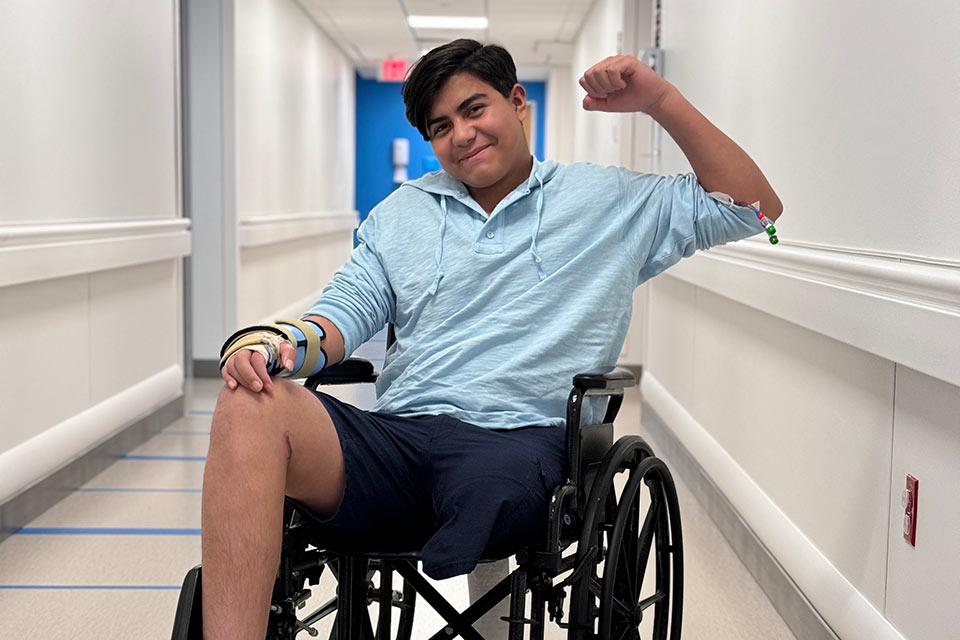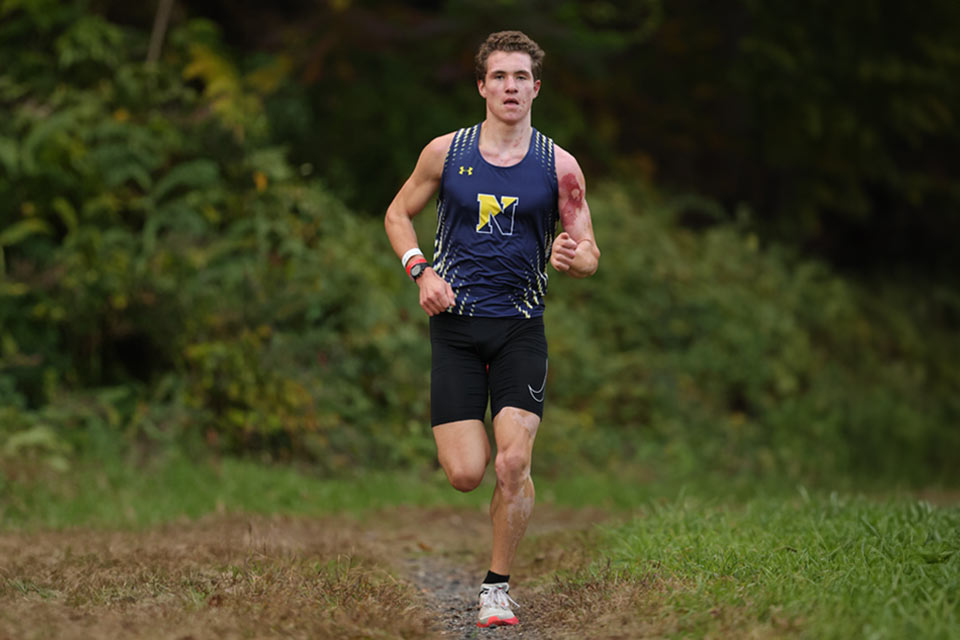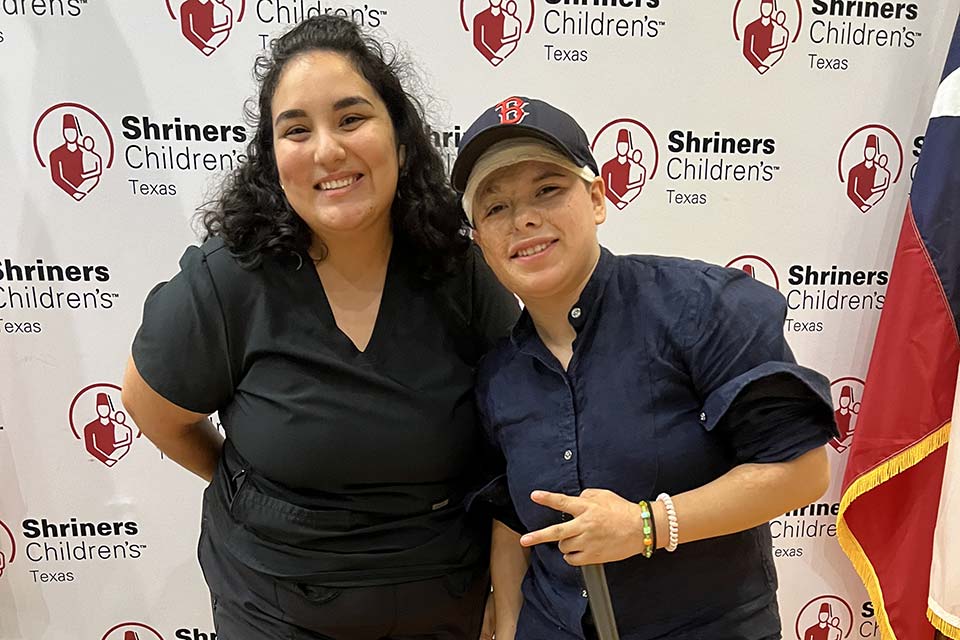-
Patient Story
Picturing a Brighter Future with Shriners Children's
https://www.shrinerschildrens.org/en/News-and-Media/Patient-Stories/2024/01/Ariel-Brighter-FutureWrap-around care incorporates more than just physical and emotional healing.
-
Patient Story
Chloe's Story
https://www.shrinerschildrens.org/en/News-and-Media/Patient-Stories/2021/10/ChloeInspired by the care she received at Shriners Children's Boston, Chloe is already raising funds to support other children with burn injuries.
-
Patient Story
'Limits Do Not Exist' for Patients at Shriners Children’s Boston
https://www.shrinerschildrens.org/en/News-and-Media/Patient-Stories/2024/12/Josue-Burn-Care-StoryJosue is thankful to have been treated at Shriners Children's Boston for burn injuries he sustained as a child.
-
Patient Story
Saint's Story
https://www.shrinerschildrens.org/en/News-and-Media/Patient-Stories/2021/10/SaintSaint's parents share photos on social media to promote acceptance and help other families navigate their own cleft experiences.
-
Patient Story
Theresa Encourages Kitchen Safety
https://www.shrinerschildrens.org/en/News-and-Media/Patient-Stories/2024/04/Theresa-Encourages-Kitchen-SafetyTheresa's love for cooking turned into a nightmare when scalding oil splashed onto her hand while cooking fried chicken, causing her to drop the pan and inflicting severe third- and fourth-degree burns.
-
Patient Story
Right on Track: Shriners Children’s Boston Helps Davis Get Back Up and Running After Burn Injury
https://www.shrinerschildrens.org/en/News-and-Media/Patient-Stories/2024/09/Davis-Burn-CareWith the help of personalized, patient-centered care, Davis made a surprising return to cross country competition while keeping his future goals on track.
-
Patient Story
Lights, Camera, Action: From POPS to the Big Screen
https://www.shrinerschildrens.org/en/News-and-Media/Patient-Stories/2025/05/Kodiak-Limb-Length-Discrepancy-CareKodiak is a 9-year-old boy born with his left leg significantly shorter than his right leg, often referred to as a limb length discrepancy.
-
Patient Story
Karolina Makes a Full Recovery After a Severe Burn Injury at the Beach
https://www.shrinerschildrens.org/en/News-and-Media/Patient-Stories/2022/04/KarolinaShriners Children's provided Karolina the burn care she needed to get back to being a kid again.
-
Patient Story
Sarah’s Story
https://www.shrinerschildrens.org/en/News-and-Media/Patient-Stories/2022/01/SarahShriners Children's Boston plastic surgeons have the expertise to treat difficult burn scars so patients like Sarah can lead full, active lives.
-
Patient Story
The Healing Power of Music
https://www.shrinerschildrens.org/en/News-and-Media/Patient-Stories/2024/09/The-Healing-Power-of-MusicThrough her love of music and art, Teresa has found strength, confidence and a way to inspire others.










